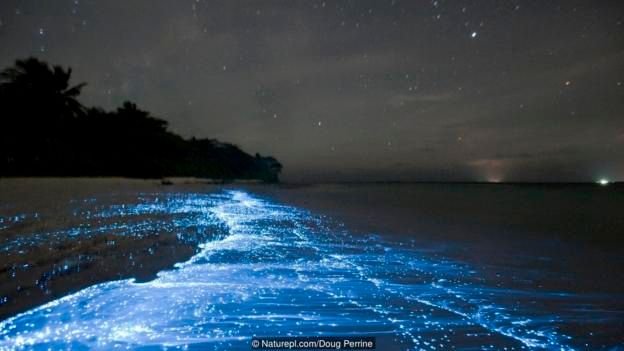The ocean is a strange place!!!!😱😱

It’s night-time in an impossibly exotic location. Waves are breaking on the beach. The water is sparkling with electric blue lights.
The internet loves an image of a magical-looking bioluminescent bay. You may also have seen travel bloggers bemoaning the real event as not quite living up the hype.
Even if the latter is true, bioluminescence (in this case usually caused by planktonic organisms called dinoflagellates) is a pretty amazing natural phenomenon.
Dinoflagellates emit blue light when disturbed, which is why they can be seen sparkling over wave crests, around boats or when a hand or paddle runs through them.
These tiny creatures are the most common source of bioluminescence at the ocean’s surface..jpg)
So-called bioluminescent bays such as in Puerto Rico and Jamaica are among the best-known places to witness the glow. However, the ephemeral phenomenon can be found throughout the ocean where there are dense gatherings of dinoflagellates.
Sometimes dinoflagellates’ population increases rapidly causing blooms, which by day are coloured a less attractive red-brown, sometimes known as red tides. And some, but not all, of these red tides are poisonous
.jpg) One night a year in spring, the biggest orgy on earth is triggered by lunar light.
One night a year in spring, the biggest orgy on earth is triggered by lunar light.
Over 130 coral species simultaneously release their eggs and sperm into the water during a window of just 30-60 minutes.
This mass spawning event might be the most extraordinary example of synchronised behaviour in the natural world.
When the gametes – eggs and sperm cells - are released they hover for a moment, forming a ghostly replica of the reef’s shape, before dispersing into an underwater blizzard as the sperm fertilise the eggs.how each of the coral species year after year spawn at the same hour of the night.
Cricket is also my drag
Great bro...its very intersting